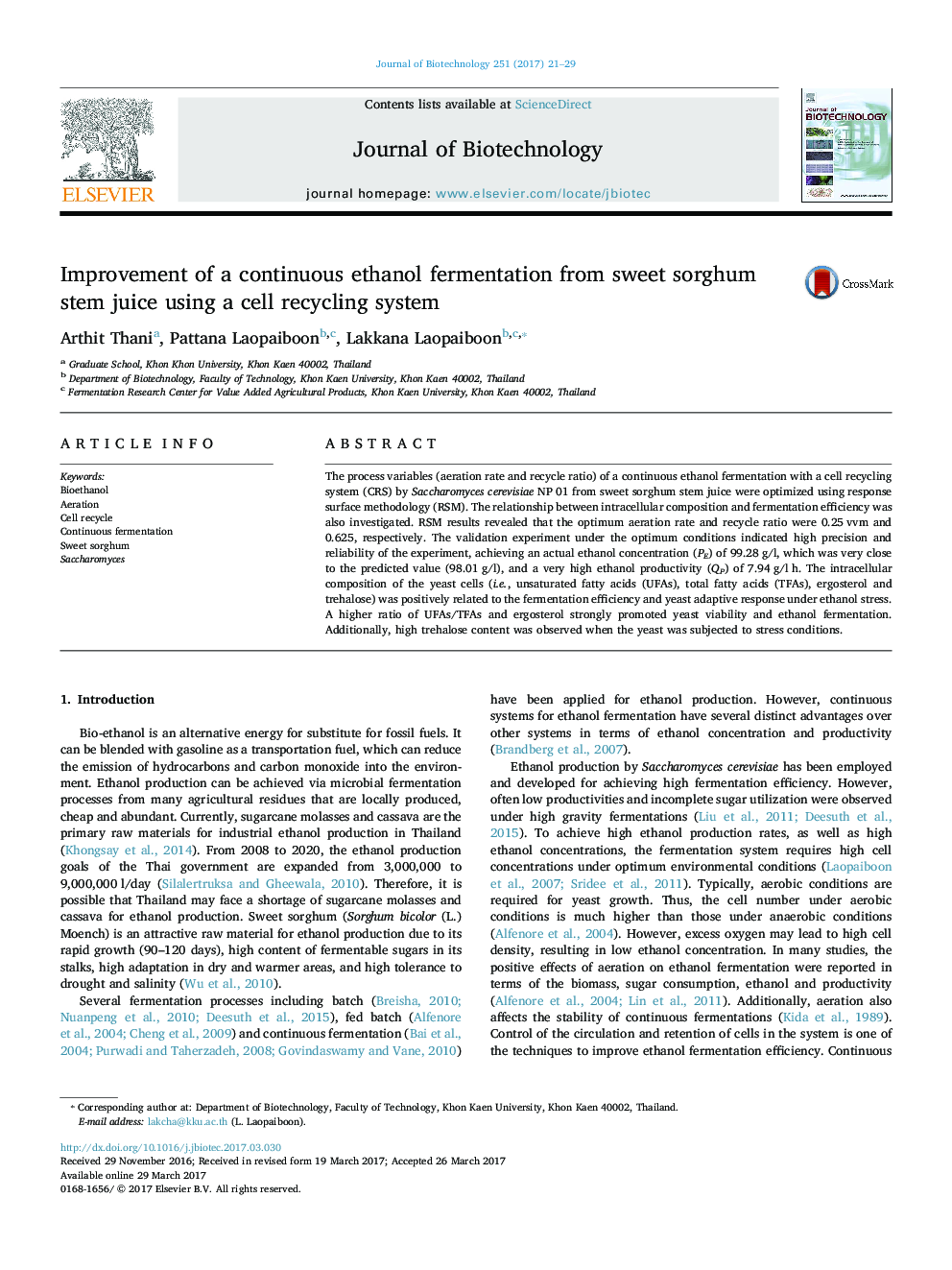| Article ID | Journal | Published Year | Pages | File Type |
|---|---|---|---|---|
| 6452072 | Journal of Biotechnology | 2017 | 9 Pages |
â¢Continuous ethanol fermentation with a cell recycling system (CRS) was developed.â¢Sweet sorghum stem juice at 230 g/l of sugar was used as a substrate.â¢Aeration and recycle ratio were key factors influencing fermentation with a CRS.â¢Very high level of ethanol production (12.5%, v/v and 8 g/l h) was obtained.â¢Intracellular composition of yeast in fermentation with a CRS was first reported.
The process variables (aeration rate and recycle ratio) of a continuous ethanol fermentation with a cell recycling system (CRS) by Saccharomyces cerevisiae NP 01 from sweet sorghum stem juice were optimized using response surface methodology (RSM). The relationship between intracellular composition and fermentation efficiency was also investigated. RSM results revealed that the optimum aeration rate and recycle ratio were 0.25 vvm and 0.625, respectively. The validation experiment under the optimum conditions indicated high precision and reliability of the experiment, achieving an actual ethanol concentration (PE) of 99.28 g/l, which was very close to the predicted value (98.01 g/l), and a very high ethanol productivity (QP) of 7.94 g/l h. The intracellular composition of the yeast cells (i.e., unsaturated fatty acids (UFAs), total fatty acids (TFAs), ergosterol and trehalose) was positively related to the fermentation efficiency and yeast adaptive response under ethanol stress. A higher ratio of UFAs/TFAs and ergosterol strongly promoted yeast viability and ethanol fermentation. Additionally, high trehalose content was observed when the yeast was subjected to stress conditions.
